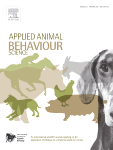Document type: summary of the impact assessment report from the Directorate-General for Health and Food Safety (DG SANTE), European Commission
Author: DG SANTE, European Commission
Preview: Executive Summary Sheet - Impact assessment for the Revision of the EU Animal Welfare Legislation
A Need for action [...]
B. Solutions
What legislative and non-legislative policy options have been considered? Is there a preferred choice or not? Why?
[...] Based on a multi-criteria analysis of their animal welfare, economic, social and environmental impacts, the following combination of preferred choices have been established (with certain transition periods when relevant):
1) Further limit the maximum journey times for the transport of live animals (9 hours maximum for animals transported for slaughter; and for other animals: 21 hours (+ 24 hours rest) + 21 hours journey).
2) Increase space allowance in the vehicle based on EFSA recommendations.
3) Apply the maximum journey times also for exports of live animals from the EU and require further tools to guarantee that EU rules are met until destination, in line with the European Court of Justice ruling (e.g. animal welfare officer on board of vessels, vessels to fulfil good standards of maritime safety).
4) Increase animal welfare requirements for the transport of vulnerable animals (e.g. for unweaned calves: max journey time of 9 hours + 1 hour feeding + 9 hours, if an effective feeding system is approved; Minimum age of five weeks and minimum weight 50 kg for unweaned calves to be transported).
5) Revise rules to limit animal suffering due to transport at high temperatures (if weather forecast indicates 25°-30°C, only short journeys allowed during daytime; if it is higher than 30°C, only transport at night).
6) Make the maximum of digital tools to facilitate the enforcement of transport rules (e.g. real-time positioning of vehicles; central database and digital application).
7) Introduce specific rules for the transport of cats and dogs (e.g. age limits and temperature conditions).
Who supports which option?
As illustrated by the diverging stakeholders' views expressed, animal welfare is an area of polarisation, where NGOs and industry seldom share the same perspectives, although they agree to the objective of improving animal welfare and reducing internal market distortion. Industry stakeholders generally agree on improvement of the transport conditions (temperature, space allowance, enhanced conditions for export, in particular by sea transport), but are reluctant to further limit journey times, in particular when it comes to exports of live animals from the EU. However, industry is internally divided due to diverging national legislation of EU Member States leading to diverging industry interests. On the other side, NGOs do not support the option to continue exporting live animals under strict conditions, and would prefer a ban on live animals' export. Similarly, they are in favour of much stricter maximum journey times (maximum 8h for all animals).
C. Impacts of the preferred option
What are the benefits of the preferred option (if any, otherwise main ones)?
The preferred option is expected to bring considerable animal welfare benefits. In addition, it will have a positive impact on transporters and other EU business operators: with more harmonised rules than today, they will profit from a more level playing field on the Single Market. Furthermore, better welfare conditions during transport will lower the animal health risks, reduce mortality rates as well as the percentage of animals arriving sick or injured at arrival, thus reducing carcass rejection at slaughterhouses (avoiding the costs of destroying carcasses, estimated to EUR 27 per carcass) and improving meat quality, as well as bringing economic gains for producers, for instance through reduced veterinary costs.
The initiative will also bring indirect societal benefits, e.g. by contributing to reduce the risk for antimicrobial resistance and the spread of zoonotic diseases, and by better responding to citizens' expectations on animal welfare.
What are the costs of the preferred option (if any, otherwise main ones)?
Transport companies will have to adapt to new transport patterns and potentially buy additional trucks due to higher space allowance. In the case of sea transport, some will need to buy new or renovate their vessels in order to ensure compliance with standards of maritime safety.
In average at EU level, the cumulative impact of the preferred option is estimated to result in an increase of production costs of EUR 0.014 per kilo of meat, milk or eggs per year. The impacts that this would have on production levels, import, export and consumer prices are expected to be negligible (below 1% in most cases), and no significant impact is expected on food security either.
As regards food affordability, the impacts on consumer prices are, depending on the commodity, expected to represent an additional expenditure ranging from EUR 2.81 to EUR 14.09 per person per year, depending on diet and income.
Some existing costs will be reduced by the savings incurred by less administrative burden due to digitalisation. Those savings have been estimated to EUR 71 million per year.
How will businesses, SMEs and micro-enterprises be affected?
Practically all EU businesses involved in animal transports are SMEs according to the usual definition of SMEs (more than 250 employees). Overall, the economic impacts are limited, thus addressing the needs of SMEs. In addition, sufficiently long transition periods are foreseen to facilitate a smooth adaptation. Also, gains and savings will be obtained thanks to higher meat quality, less carcass rejection and lower use of veterinary medicines.
Will there be significant impacts on national budgets and administrations?
No significant impact.
Will there be other significant impacts?
No.
D. Follow up
When will the initiative be reviewed?
A general evaluation will be performed 10 years after the entering into force. For this purpose, an implementation and evaluation report will be prepared by the Commission, taking into account data collected based on the revised Regulation as well as data from TRACES and Member States' annual reports on official controls performed.
Link to the impact assessment report (180 pages)






